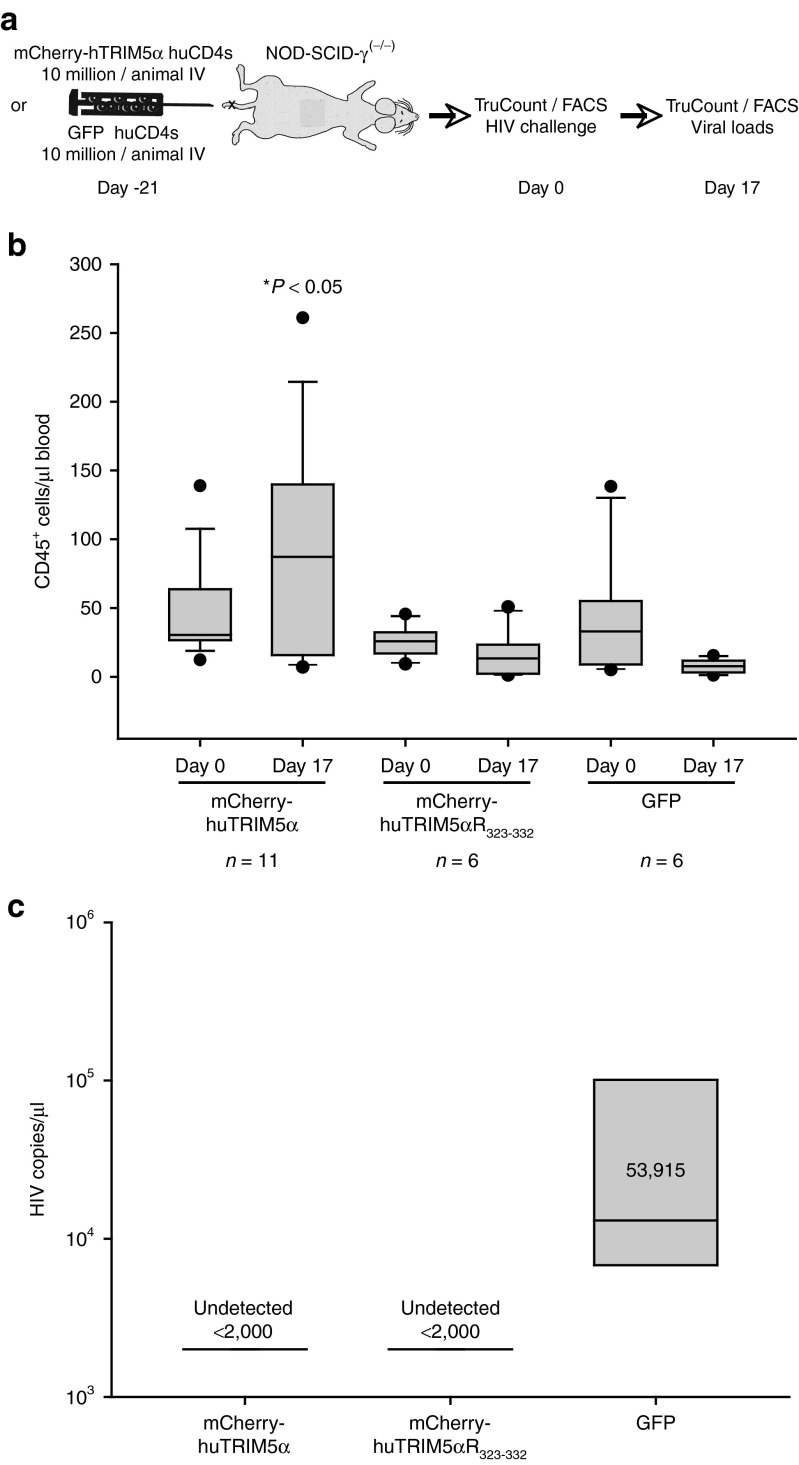Figure 6.
Enhanced overexpression of huTRIM5α results in potent antiviral activity in vivo. (a) Schematic for the experiment; 10 million TRIM5α-expressing (mCherry-hTRIM5α or mCherry-hTRIM5αR323–332) or GFP-expressing CD4 T cells were injected intravenously in NOD-SCID-γ(−/−) mice and monitored for engraftment by TruCount for CD45+ cells. Animals in each group—mCherry-hTRIM5α (n = 11), mCherry-hTRIM5αR323–332 (n = 6), or GFP (n = 6)—engrafted similarly. After 3 weeks, intravenous cell-free HIV-1BaL challenge was performed on day 0, following baseline prechallenge TruCount and normalization. TruCount and fluorescence-activated cell sorting (FACS) analysis for cell survival were then performed at day 17 postchallenge. (b) TruCounts for the number of human CD45+ cells at day 0 prechallenge in the three groups, and those remaining on day 17 postchallenge as enumerated by TruCount. (c) Mean HIV-1 viral loads on day 17 postchallenge in TRIM5α-transduced (mCherry-hTRIM5α or mCherry-hTRIM5α R323–332) or GFP groups. This experiment was performed once in this format, but the ability of stabilized huTRIM5α to protect CD4 T cells in vivo was observed in similar experiments. Kruskal–Wallis one-way analysis of variance on Ranks with Dunn's method for multiple comparisons was performed to evaluate differences in CD45+ TruCounts between the three groups.

